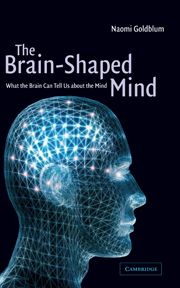Book contents
- Frontmatter
- Contents
- Preface
- Figure permissions and acknowledgments
- 1 Introduction
- 2 What the brain cannot tell us about the mind
- 3 How neurons form networks
- 4 Theories and models of how the mind functions
- 5 What are connectionist networks?
- 6 How our networks learn
- 7 Connecting the networks: how different things are related
- 8 Evidence for connectionist models
- 9 Two different types of memory
- 10 Coping with disaster
- 11 Practical implications
- 12 Criticism of connectionist theory
- Annotated references and suggested readings
- Index
10 - Coping with disaster
Published online by Cambridge University Press: 02 December 2009
- Frontmatter
- Contents
- Preface
- Figure permissions and acknowledgments
- 1 Introduction
- 2 What the brain cannot tell us about the mind
- 3 How neurons form networks
- 4 Theories and models of how the mind functions
- 5 What are connectionist networks?
- 6 How our networks learn
- 7 Connecting the networks: how different things are related
- 8 Evidence for connectionist models
- 9 Two different types of memory
- 10 Coping with disaster
- 11 Practical implications
- 12 Criticism of connectionist theory
- Annotated references and suggested readings
- Index
Summary
What happens when our networks are damaged? How do they cope with the impact of soft brain tissue against the hard skull in traffic accidents, or the strokes or neural degeneration that may occur in our later years?
A great deal of research has been done on the effect of strokes on our various mental abilities, and computer models have been designed to mimic this sort of damage, so I will have the most to say about how our networks cope with strokes. Traffic accidents tend to cause a very different sort of damage, to an area which has been difficult for connectionist theory to explore, and I will try to explain the problems involved. I will have only a few words to say about the connectionist explanation of what happens in Alzheimer's disease, as very little is known about it.
What do strokes do to our networks?
So far we have seen how our knowledge networks are built up slowly and gradually over the years to provide us with ways of acting in the world, methods of distinguishing one thing from another, memories of what happened a long time ago and information about what has just occurred. What happens when these networks are damaged? When someone has a stroke – when an artery in the brain is blocked by a blood clot and the surrounding area no longer receives blood to nourish its neurons, so that many of them die all at once? Or when someone has a brain hemorrhage – when an artery in the brain bursts and floods the surrounding area with blood, again killing many neurons at once?
- Type
- Chapter
- Information
- The Brain-Shaped MindWhat the Brain Can Tell Us About the Mind, pp. 95 - 107Publisher: Cambridge University PressPrint publication year: 2001



